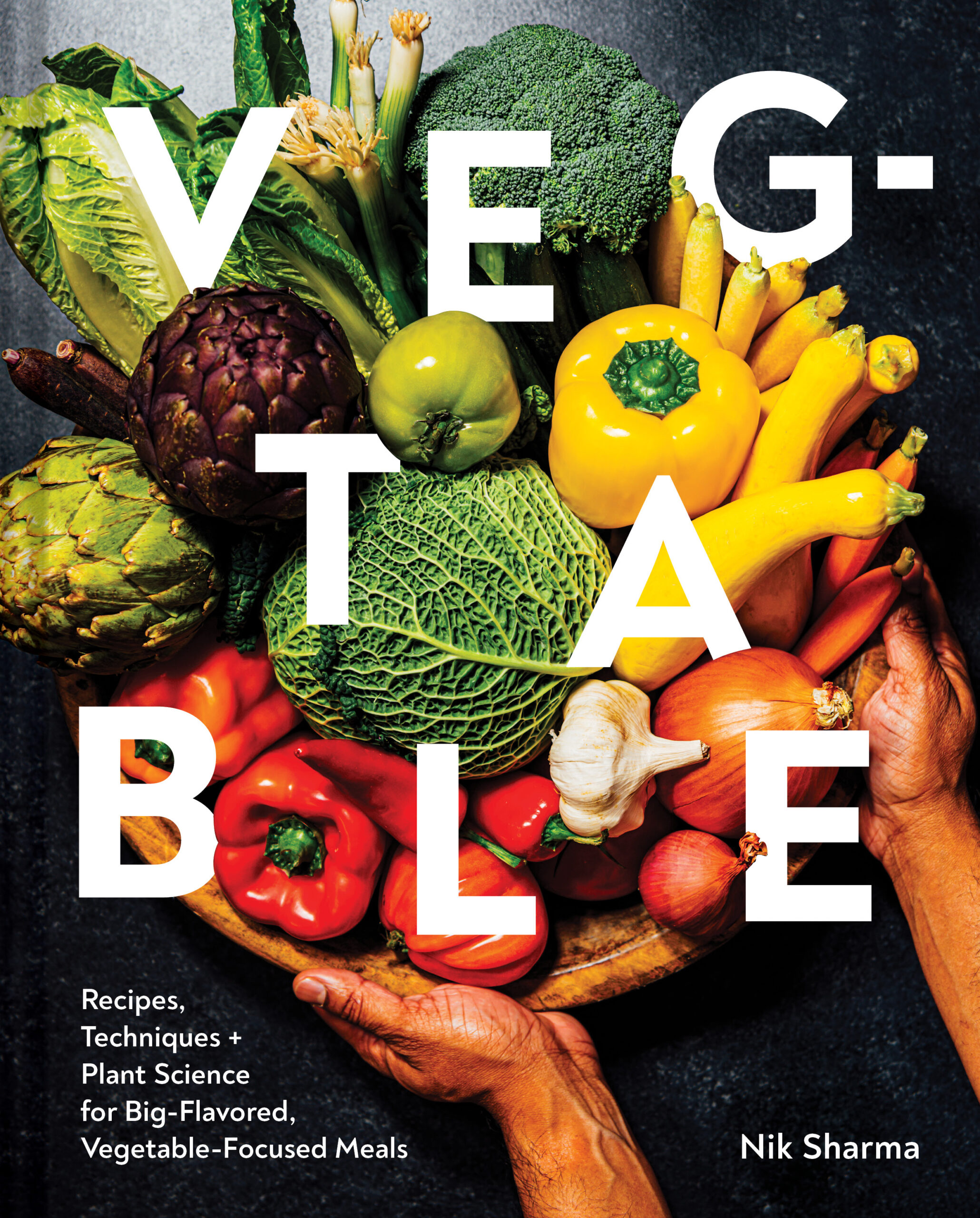
What is Halwa/Halva?
Halwa/Halva is an Indian sweet that originates from the Arab word “hulw” and came from Persia (read more about the history of Indian halwa here). In India, halwa can be made from anything sweetened, from semolina to fruits, and sweet vegetables like carrots, eggs, nuts, beans, and even chickpeas. I’ve made a few halwas in my lifetime, and the last one I wrote about was in my column at Serious Eats – Semolina Halwa that you must try (I even eat it for breakfast). Halwa can be eaten on festive occasions and on a regular day too.
Generally speaking, when making most halwas, fragrant fat like ghee or coconut oil, milk, spices, and sugar are added to the main halwa ingredient and then cooked. The halwa is then served garnished with thin sheets of edible silver called varak and dried fruits and nuts. Nothing is set in stone; these garnishes change with the recipe and our personal preferences.
Carrot Halva
Carrots occupy an interesting position in cooking; they work in savory and sweet recipes rather nicely, all due to their sweet nature.
Carrot roots are storage organs for starch (the starch provides energy to the plant as it grows), and starch (starch is a sugar polymer). These sugars inside the carrot play an essential role in deciding to cook and eat carrots.
Have you ever left carrots on the countertop and forgotten about them? Oddly enough, they’ll turn limp and start to taste much sweeter. As carrots age, an enzyme called amylase jumps in and cuts the starch into individual sucrose molecules (aka table sugar); sucrose tastes sweet and makes the carrot taste sweeter. Carrots are stored at cold temperatures in the refrigerator to reduce the risk of this happening. Now, I certainly don’t want you using old carrots, and I don’t want you to age them on your kitchen countertops to make them taste sweeter. There’s another way by which you can make carrots taste sweeter, and that’s through heating. When carrots are heated (in this recipe, the carrots are braised), the combination of heat and water helps break the starch, and the carrots turn tender and taste sweeter.
There are several ways to make carrot halwa or gajjar ka halwa (in Hindi); some involve condensed milk or khoya (a dairy solid obtained from cooking milk). This recipe is straightforward; you start with milk and braise the carrots until the liquid evaporates. It also isn’t as sweet as some of the store-bought ones.
I often think that carrot halva is an exercise in building food color and aroma; there’s a lot of wisdom in how it artfully plays with just two spices (cardamom and saffron). Carrots are rich in the carotenoid pigment, beta carotene. This orange-colored pigment is fat-soluble, which means that they dissolve in fat, so the use of ghee and whole milk helps draw out those pigments, and you’ll see it in action as you cook. The ghee will start to turn bright orange; on the other hand, the milk will be a slightly lighter shade of orange because, comparatively, there’s less fat, and that fat is dispersed in the milk (milk is an emulsion of oil-in-water). Eventually, the dish is cooked until the water from the milk evaporates, and what’s left behind are milk solids and fat.
This dish’s second source of color comes from saffron, the dried stigmas collected from the crocus flower. Saffron contains the yellowish-red pigment crocetin that gives it its distinctive color, and one of the players behind its unique fragrance is safranal. Too much saffron can be an intense sensory experience, which is good because it’s an expensive spice; a little bit goes a long way. Cardamom (green cardamom and not black) is the final ingredient in this sweet, adding its cool sweet scent. The result is a cloud of absolute pure heavenly sweetness.
When I make carrot halva, I prefer a coarse over a fine grate, I like the bite, but you can choose whatever suits you. What’s more critical is cooking the carrots slowly, so they turn tender and don’t burn. At no point should the carrots turn golden brown; we’re not looking to build any deep bittersweet flavors in the carrots. Once the milk is added, the carrots will absorb the liquid and turn even more tender, don’t be surprised if the milk eventually curdles; carrots are acidic in nature (acids curdle the milk). This will not affect the taste since the milk needs to be evaporated entirely, and the milk solids will form a crumbly texture around the carrot shreds. Carrot halwa can be eaten warm or at room temperature; I avoid eating it cold since the ghee starts to firm up (but you can eat it cold if you want to). For the garnish, I usually opt for almonds, cashews, and pistachios, either by themselves or in a combination. Shelled melon seeds are also used as a garnish; you can find them at an Indian store or online; the one that I picked up is called char-magaz (it contains 4 types of melon seeds).
Carrot halwa is undoubtedly one of the more spectacular and famous Indian sweets, and I think, it deserves its own National or International holiday (and eventually should get one). It can bask in the spotlight on Diwali and National Carrot Day!
Carrot Halwa/Gajjar Ka Halwa
Not only is it one of the most popular sweets served at Indian holidays like Diwali and festive occasions, but carrot halwa or gajjar ka halwa is also one of the simplest treats to make at home. It’s one of those desserts that I consider comfort food, and yeah, on occasion, I’ve eaten it for breakfast too.
Print
Carrot Halwa/Gajjar Ka Halwa
5 Stars 4 Stars 3 Stars 2 Stars 1 Star
No reviews
Not only is it one of the most popular sweets served at Indian holidays like Diwali and festive occasions, but carrot halwa or gajjar ka halwa is also one of the simplest treats to make at home. It’s one of those desserts that I consider comfort food, and yeah, on occasion, I’ve eaten it for breakfast too.
- Yield: 4 to 6 servings
Ingredients
¼ cup/60 ml ghee
1 ½ lb/680 g coarse or finely grated carrots
4 ½ cups/1 L whole milk
½ cup/100 g sugar
¾ tsp ground green cardamom
15 to 20 strands of saffron
½ cup/35 g golden raisins
2 Tbsp whole or broken roasted cashews
2 Tbsp chopped roasted pistachios
Instructions
- Melt the ghee over low heat in a large heavy-bottomed saucepan or stockpot (I prefer a stockpot for this because it is deep and won’t let the milk boil over). Stir in the carrots, cover with a lid, and cook until the carrots turn tender, 25 to 30 minutes. Stir often to prevent the carrots from sticking to the bottom of the saucepan and burning.
- Pour in the milk and stir in the sugar. Cook over low heat, until all the liquid evaporates, stirring often to prevent the carrots from sticking to the bottom of the saucepan and burning, 1 to 1 ½ hours. At the 45-minute mark, stir in the cardamom and saffron along with the raisins. Once the liquid evaporates, remove from the heat and transfer to a serving dish. Garnish with the chopped nuts. Serve warm or at room temperature. This halwa will be good for up to a week if stored in an airtight container in the refrigerator, but it won’t last that long.
Notes
- In most instances, I recommend unsalted butter as an alternative to ghee. This is one place you’re better off using ghee due to its nutty aroma. If you do end up using butter, you will need to cook it till the water evaporates and the milk solids turn light brown. You must then remove the melted fat and discard all the solids. You will simply end up making ghee, so just save yourself a few extra steps and start with ghee.
- The nuts can be salted but they should be roasted. Typically, the nuts are fried in ghee, but I don’t like to do that here, I like the aroma of roasted nuts. If you prefer the nuts fried, fry them in the ghee before you cook the carrots. Remove the nuts and transfer them to a bowl.
- There is no need to add salt. The carrots and milk have enough sodium on their own. If you’re still unconvinced, taste the halwa once the milk evaporates to determine if it really needs salt.
- Avoid serving this cold as ghee solidifies when cold.
- Author: Nik Sharma

